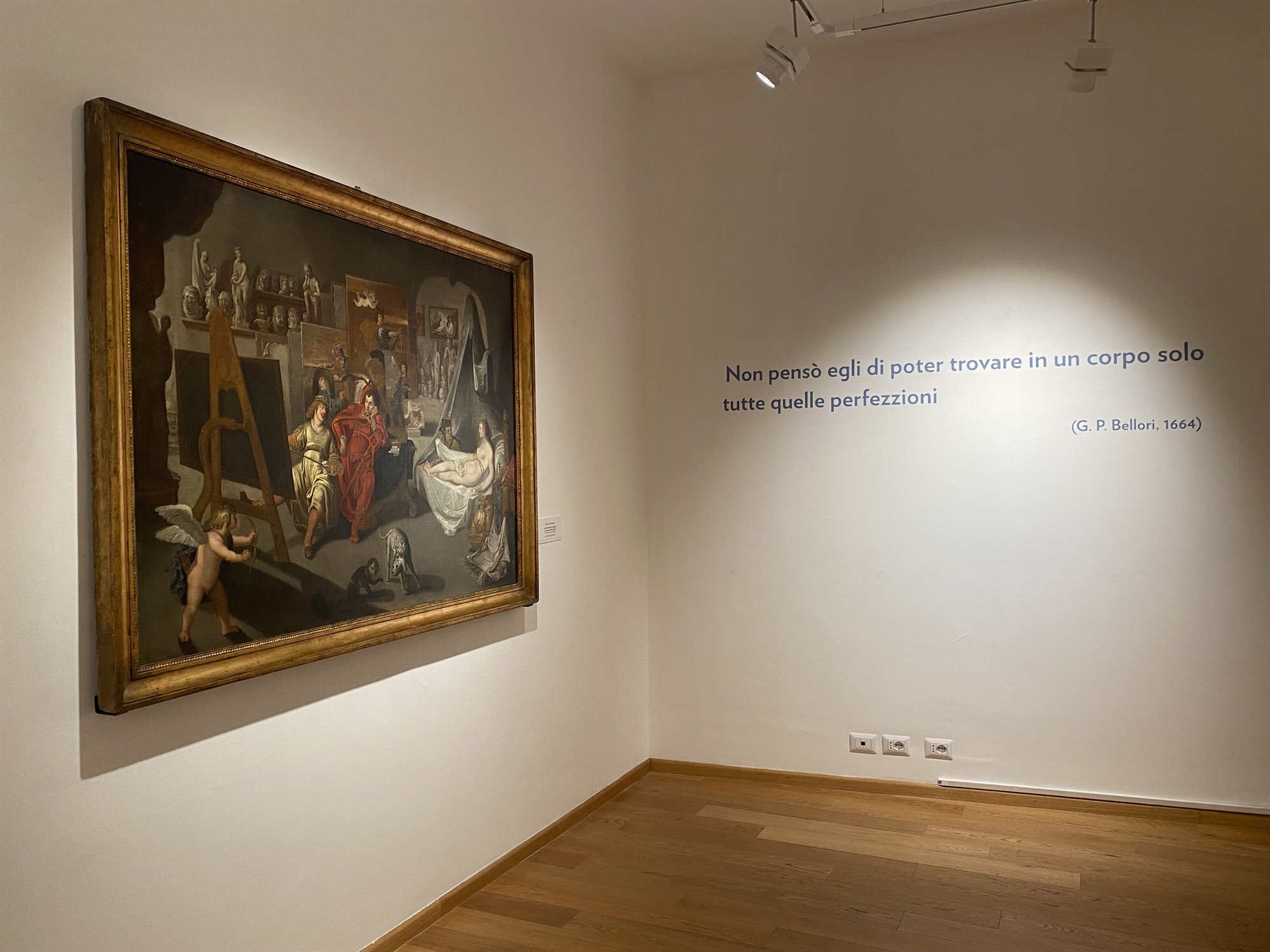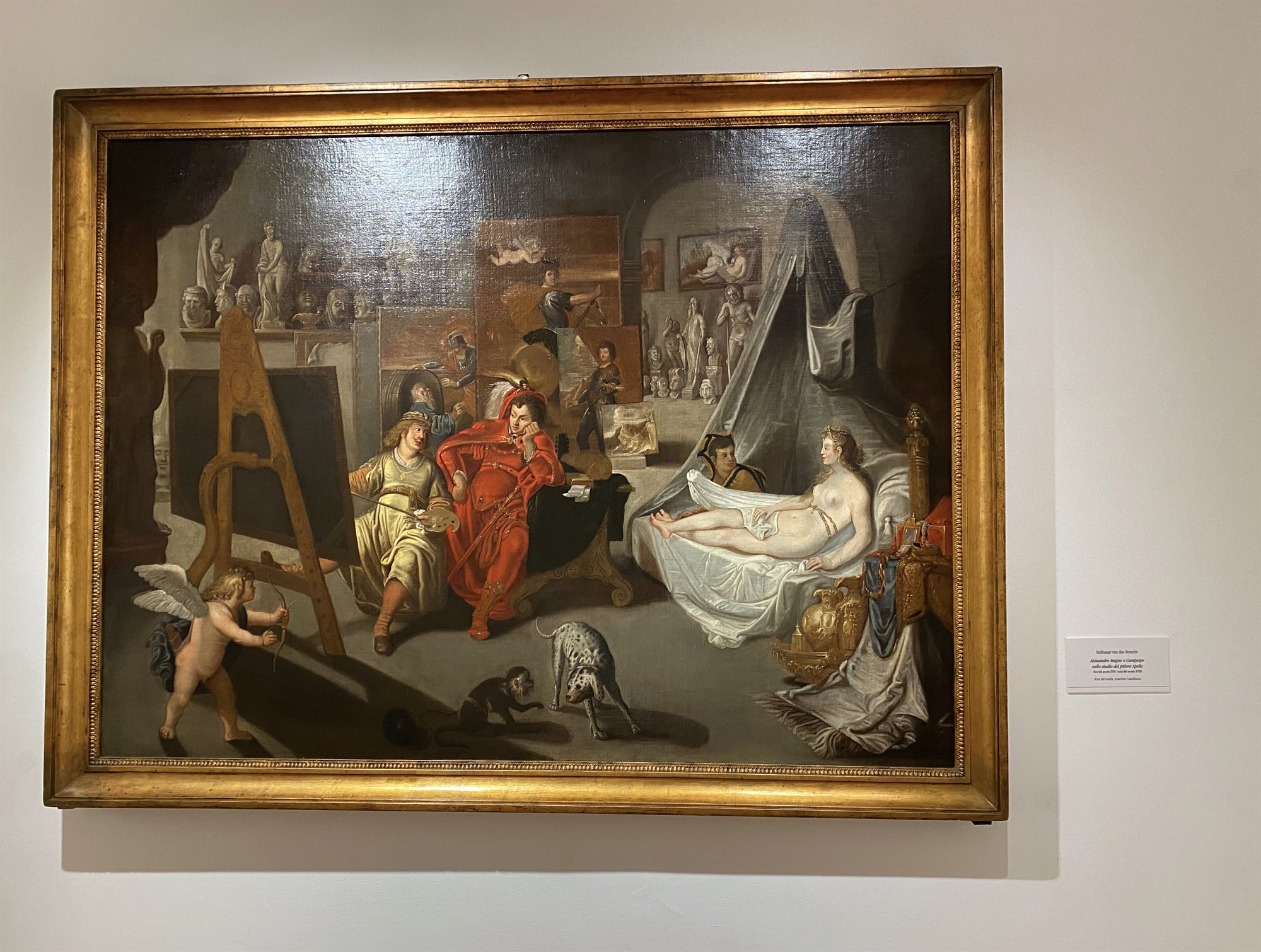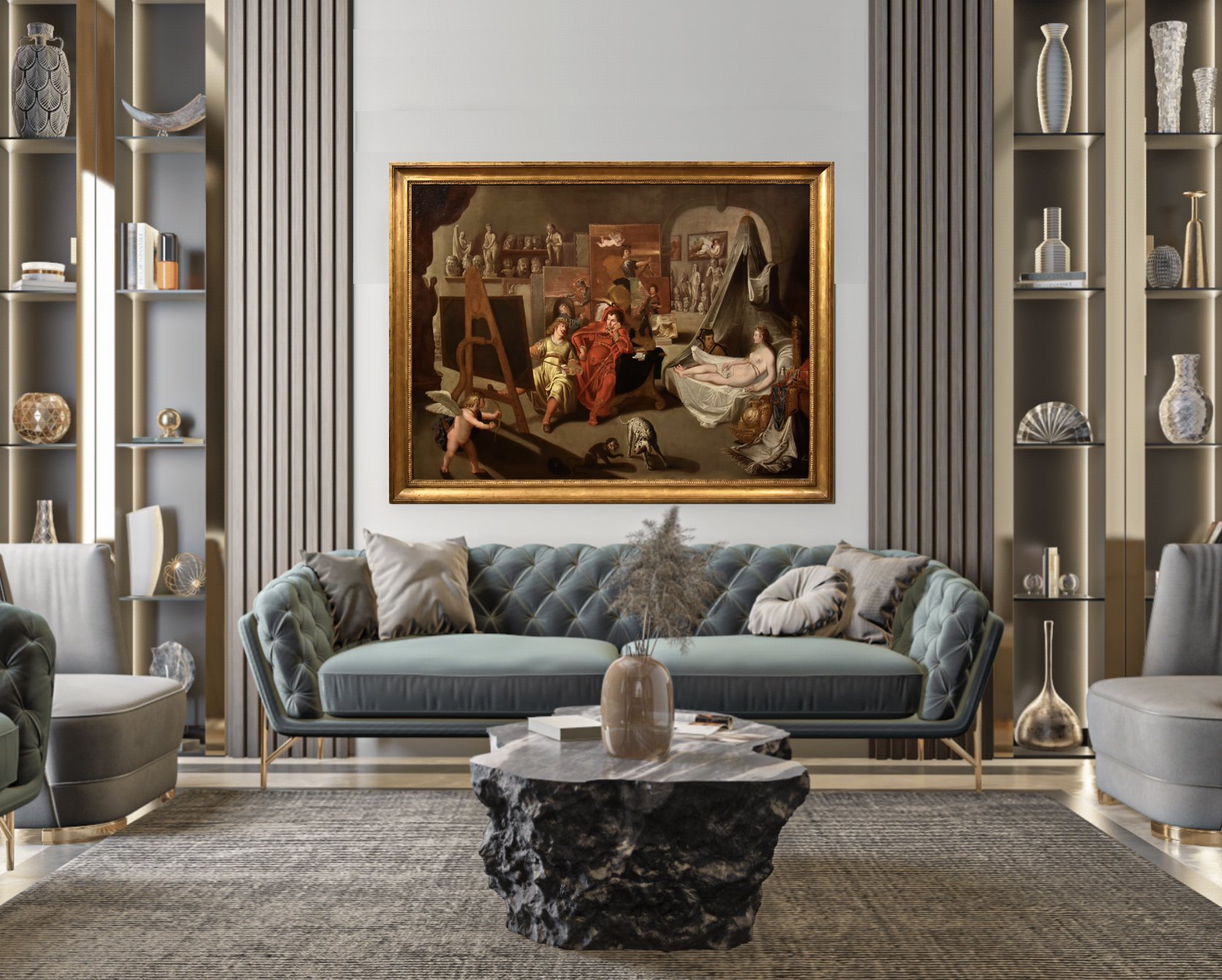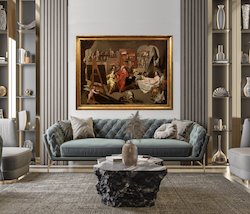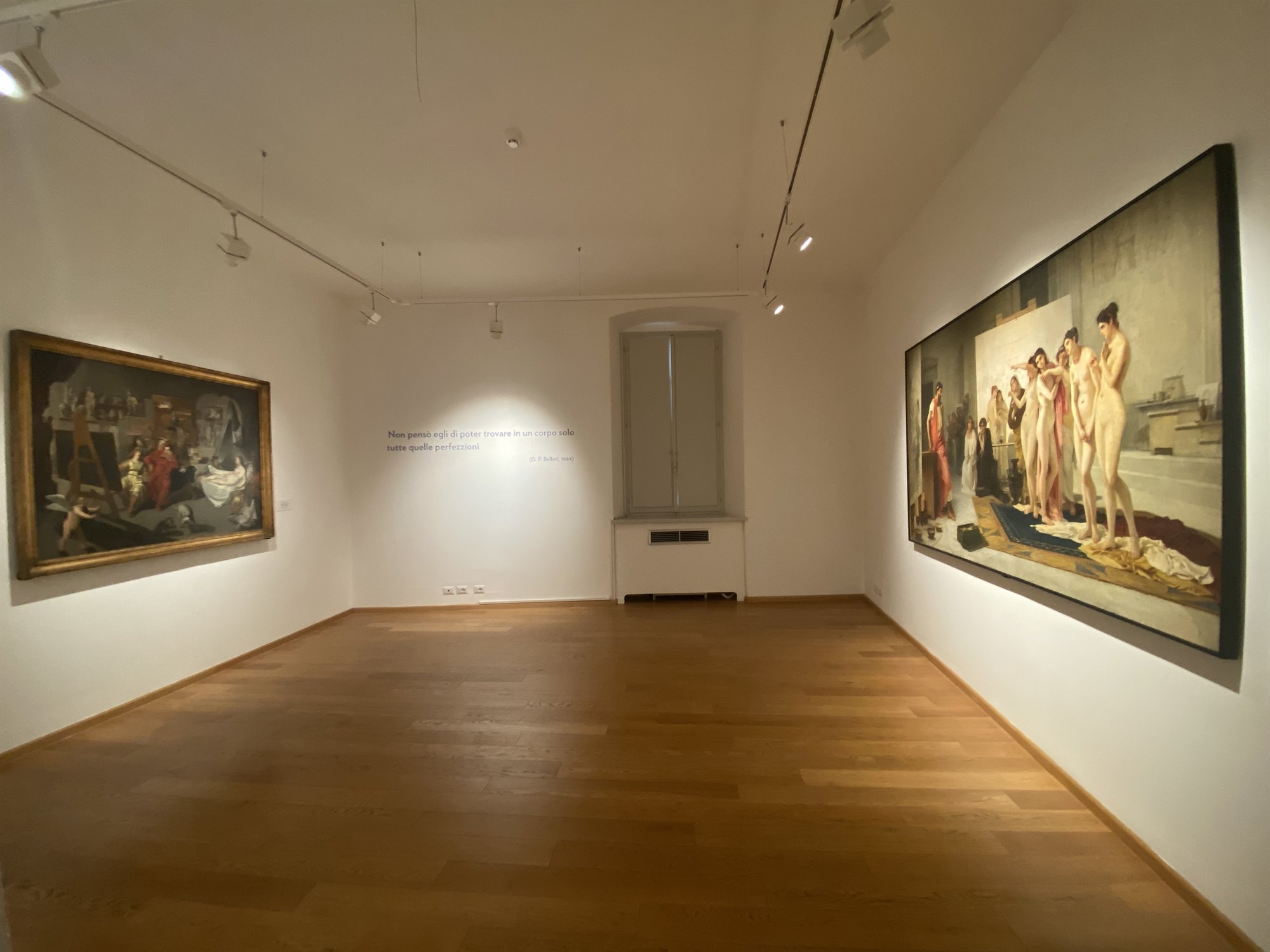Balthasar Van Den Bossche (Anversa, 1681 - 1715)
Alessandro Magno nello studio del pittore Apelle
Balthasar Van Den Bossche
(Antwerp, 1681 - 1715)
(Antwerp, 1681 - 1715)
Alexander the Great and Campaspe in the studio of the painter Apelles
The canvas was exhibited in Perugia (Museo di Palazzo della Penna) at the exhibition "RENAISSANCE IN THE BOTTEGA: PERUGINO AMONG THE GREATS OF HISTORY" (29 October 2023 - 28 January 2024) - see photo details -.
Oil painting on canvas
120 x 162 cm.
In gilded frame 135 x 176 cm.
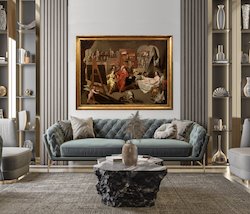

This fascinating painting, a real gem for any connoisseur and collector of old paintings, depicting Alexander the Great in the studio of the painter Apelles to view the portrait of his favourite concubine Campaspe, is a quality work by the Flemish artist Balthasar Van Den Bossche (Antwerp 1681 - 1715).
Born in Antwerp, he trained in the workshop of Gerard Thomas and was awarded the title of master in the Antwerp Guild as early as 1697. This was followed by a move to Paris, documented until 1700, where he founded his own studio, alternating his work as a painter with that of an art dealer. His combination of the elegance of the French style with Flemish characters brought him enormous success among Parisian collectors.
The collector's success of his creations was remarkable, obtaining the patronage of important personalities such as the Duke of Marlborough, his fervent patron. He finished his career in his home town, with a flourishing workshop, specialising in interior paintings of studios and picture galleries.
Our beautiful canvas, presumably executed at the turn of the century, is a fine example of his production, rich in detail and of great charm.
It depicts an episode recounted by Pliny the Elder in his work Naturalis Historia (Book xxxv, 85-87), written in 77 A.D., in which it is narrated that the illustrious painter Apelles, thanks to his enormous artistic talents, became the favourite of Alexander the Great, who called him to paint the portrait of Campaspe, the favourite among his concubines;
During the execution of the work, the painter fell madly in love with the young woman, who was therefore given to him by the leader as a form of thanks for his services. The anecdote of Apelles and Campaspe is often quoted and illustrated because it shows the high esteem of a ruler for his court painter, whose artistic ability is highly appreciated and who, therefore, occupies an important position in society.
As early as the 16th century, this subject was habitually included among the 'exempla virtutis' within celebratory decorations, as the act of handing over the young Campaspe to Apelles was considered an example of the magnanimity of Alexander the Great and thus reflected the moral qualities of the patron, who, thus compared to the valiant leader, implicitly acquired his gifts;
Let us now enter into the details of the composition, which sees the painter, seated in front of his easel, observing the beauty of the young woman posing and then portraying her features, and at his side Alexander in bright red Renaissance clothing, who looks critically at the painting to be completed.
The scene is animated by a small Cupid, hidden behind the easel, who is about to shoot his love arrow towards the painter.
In the central part the painter has inserted two animals, particular for their allegorical meanings and recalling the two male protagonists of the canvas: a monkey, tied by an iron ball, embodying carnal instincts and lust, with a dog at his side, alluding instead to loyalty and deep friendship.
Framing the scene, one cannot but be struck by the setting of the artist's large workshop, rich in details such as the classical sculptures, the numerous paintings that are already completed and the still life with precious objects near the young woman lying down.
The peculiarity of this type of work, typical of the old Flemish tradition, is precisely the precision and richness of detail with which the painter enriched his settings, destined for wealthy patrons. In such compositions, the taste for depicting opulent environments emerges, alluding to the social superiority but above all to the culture and passion for art of the wealthy patrons.
The painting is in an excellent state of preservation and is accompanied by an antique gilded frame.
The painting is sold with a certificate of authenticity and a descriptive iconographic card.
We take care of and organise the transport of the purchased works, both for Italy and abroad, through professional and insured carriers.
Contact us for any information, we will be happy to answer you.
Follow us also on:

